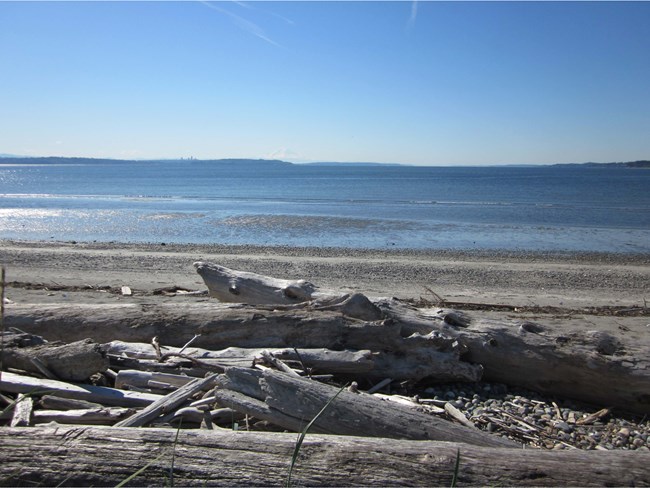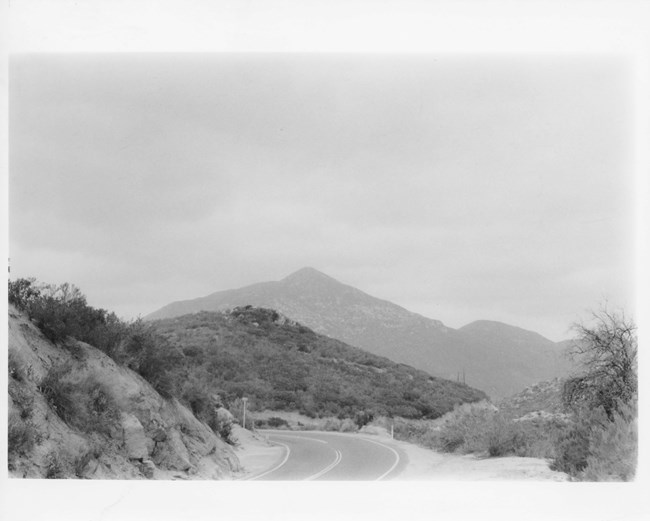
Photograph by Stephanie Trudel, courtesy of Suquamish Tribal Historic Preservation Office
Washington, Reference number: 100004076
Area of Significance: Archeology, Education, Entertainment/Recreation, Ethnic Heritage-Native American, Religion
Period of Significance: time immemorial to present
The Doe-Kag-Wats Traditional Cultural Place is locally significant and meets National Register Criteria A, B, and D. Located along the shoreline of Port Madison Bay, the 300-acre wetlands complex is recognized as a culturally significant resource by the Suquamish Tribe who have used the area for shellfish collecting and processing, hunting, plant gathering, fishing, camping, recreation, and spiritual activities from time immemorial to the present. This is a THPO-written nomination presenting clear tribal perspectives on the resources and landscape.
Link to the file
Arizona, Reference number: 100008342
Area of Significance: Ethnic Heritage - Hispanic, Ethnic Heritage - Native American, Exploration/Settlement, Religion
At the request of the community, no photographs were required to be submitted with this nomination.
The Guadalupe Cemetery occupies five acres in the City of Tempe, Arizona. It is located at the site of the original Yaqui settlement of Guadalupe and has been used continuously by the Yaqui and Hispanic populations of the Town of Guadalupe since the end of the nineteenth century. The cemetery provides a place for the Yaqui people of Guadalupe and the wider Salt River Valley where they may reconnect with their ancestors and families. The Guadalupe Cemetery is also a living place for the celebration and reaffirmation of Yaqui heritage.
Link to the file

Photograph courtesy of Bureau of Land Management, Palm Springs-South Coast Resources Area
California, Reference number: 92001268
Area of Significance: Religion
The district, listed in 1992, is a sacred mountain associated with the Kumeyaay Indians. The mountain peak marks a significant location for the acquisition of knowledge and power, and remains a location of rituals and rites important to the Tribe. Eligible under Criterion A, the 510-acre district is documented through ethnographic studies and oral history. Despite modern intrusions, the tribal perspective on its integrity supports the continuing traditional cultural importance of the place.
Link to the file

Photograph by Kathleen Howe.
New York, Reference number: 00001276
Area of Significance: Art, Ethnic Heritage, Religion, Social History
Period of Significance: 1937
Our Lady of Mount Carmel Grotto was listed in 2000 as a district at the local level of significance with a period of significance of 1937 under Criteria A and C, and Criterion Consideration A, for its significance as an example of Italian American vernacular religious architecture and a tangible expression of Staten Island’s Italian American community. Created by Italian immigrants, the Grotto’s stone-studded ornamentation and rough surface is augmented with sea shells and bicycle reflectors, demonstrating an appreciation of the spiritual power of objects long associated with water and light. The Grotto was neither initiated, nor is it maintained, by the Roman Catholic Church.
Link to the file

Photograph courtesy of South Carolina State Historic Preservation Office
South Carolina, Reference number: 100008589
Areas of Significance: Community Planning and Development, Ethnic Heritage-Black, Social History
Period of Significance: 1875-2022
The Phillips Community Historic District is significant for the distinct Gullah culture of the South Carolina Lowcountry region. It is a remarkable example of an intact rural freedmen's community in Mount Pleasant, South Carolina, retaining the settlement patterns, historic landscape features, and original plat lines that have defined the community for over a century, and core aspects of Gullah culture are continued through agriculture, commerce, and social and religious customs.
Link to the file

Photograph by Mary Jane Warde.
White Eagle Park
Oklahoma, Reference number: 07000522
Areas of Significance: Ethnic Heritage: Native American, Religion, Performaing Arts, Social History
Period of Significance: 1878 to present
White Eagle Park was listed in 2007 as a site at the state level of significance with a period of significance of 1878 to the present under Criterion A as the tradtional place of cultural practices of the Ponca Indians for more than 100 years. The evolution of traditional cultural practices over time does not necessarily make a traditional cultural place ineligible for inclusion in the National Register. The annual Powwow at White Eagle Park has grown over the centuries into a multi-day event with large crowds of both Tribal members and the public converging on the campground to watch or participate in the dances.
Link to the file

National Park Service, National Register of Historic Places
The following places are discussed in the recently updated TCP Bulletin, available on the National Register Publications page.
Atantano Shrine (NR Ref. No. 95001367)
Ballast Island (NR Ref. No. 100006067)
Bohemian Hall and Park (NR Ref. No. 01000239)
Creek Council Tree Site (NR Ref. No. 76001576)
Cycadia Cemetery (NR Ref. No. 100003522)
Cypress Street Schoolhouse (NR Ref. No. 15000380)
Doe-Kag-Wats (NR Ref. No. 100004076)
Fishtown Historic District (NR Ref. No. 100006765)
Green River Drift Trail (NR Ref. No. 12001224)
Inyan Kara Mountain (NR Ref. No. 73001929)
Lawetlat'la (Mt. St. Helens) (NR Ref. No. 13000748)
Medicine Bluffs (NR Ref. No. 74001659)
Nantucket Sound (NR Ref. No. 65009992)
Our Lady of Mount Carmel Grotto (NR Ref. No. 00001276)
Pascua Cultural Plaza (NR Ref. No. 04001032)
Rice Bay (NR Ref. No. 15000353)
Sleeping Buffalo Rock (NR Ref. No. 96000548)
St. Augustine Catholic Church and Cemetery (NR Ref. No. 14000679)
Tarpon Springs Greektown Historic District (NR Ref. No. 14000321)
Tortugas Pueblo Fiesta of Our Lady of Guadalupe (NR Ref. No. 100001437)
Turtle and Shark (NR Ref. No. 14000925)
White Eagle Park (NR Ref. No. 07000522)
Last updated: July 25, 2025
